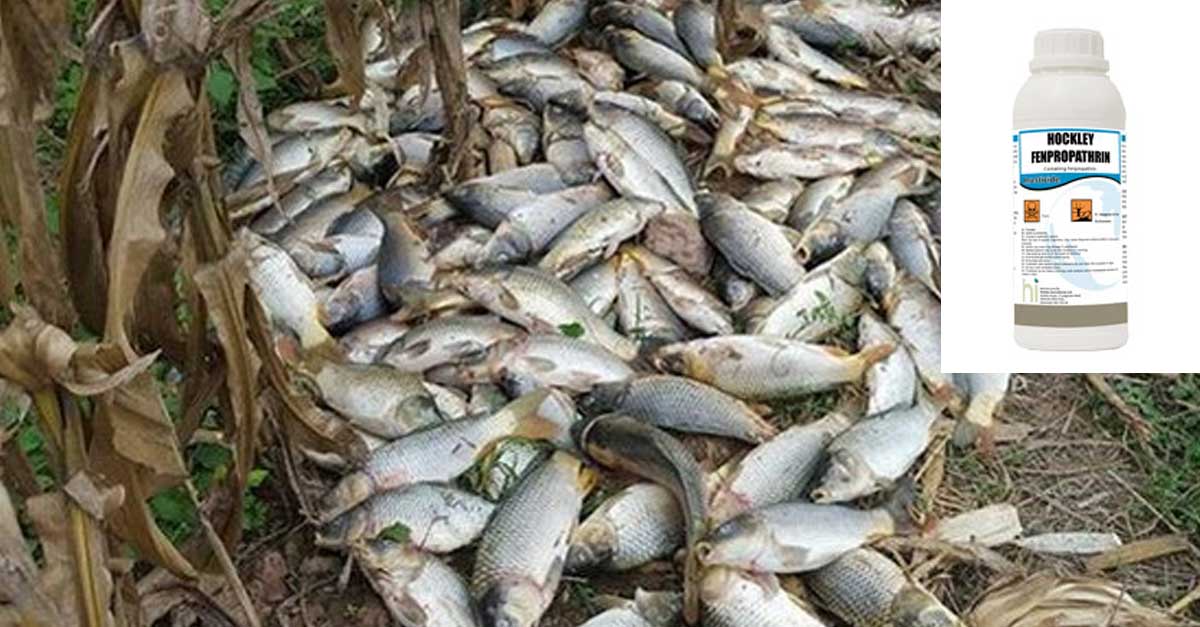A toxic chemical known as “Fenpropathrin” has been identified as the cause of mysterious fish in the Nam Ngao Sanctuary in Houayxai District, the Department of Pollution Control, Ministry of Natural Resource and Environment has confirmed.
As previously reported by The Laotian Times, on February 12th, citizens of the Houayxai district in Bokeo province described lifeless fish floating down the Ngao River. Since then, seven people in the nearby community of Nam Deua village have fallen ill, observing symptoms like headaches, fatigue and nausea after consuming fish brought from the contaminated river.
“Based on data collected during our field inspection, about 800 to 1,000 kg of fish are believed to have been killed by Fenpropathrin,” states Mr Khamphanh Nanthavong, director general of the department.
Fenpropathrin is a pyrethroid insecticide commonly used in agriculture and everyday households. It was originally produced in 1989 and banned by the World Health Organisation in 2016 as a result of its high toxicity. The hazardous synthetic can enter the human body system just through skin contact and has a long term lingering effect.
Though authorities have previously warned local citizens not to ingest or peddle any dead river life in their villages or nearby communities, fish were reportedly illegally sold and eaten.
“Samples of some contaminated water have been sent to Vientiane Capital for laboratory examination to decide if the water can be used for domestic purposes and we expect that the lab result will be revealed in couple days,” says Mr Khamphanh.
Most of the fish that were poisoned in the Nam Ngao sanctuary are protected native aquatic species which include the tilapia, Chinese carp, perch, and Poropuntius-deauratus. The sanctuary spans over 1.5 km, with a major section located in Pongnanoun village. The Nam Ngao Sanctuary was established to preserve and protect precious wildlife in the river.



